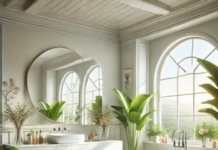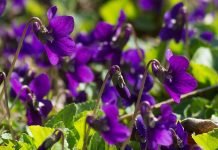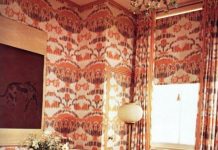Planting In Hypertufa Containers – Hypertufa is a mixture of cement, sand and peat that you just mix up and slap on. A coating of hypertufa is a great way to make a whole lot of tatty old pots instantly match. Turn a grotty dark damp garden into a romantic grotto in just a few hours by coating a breeze-block wall with craggy hypertufa and teaming it with a collection of tufa-clad containers – looks lovely planted up with a few fern and hostas, for example.

Because it looks like natural stone, the sort of things that look really good with tufa are slightly wild-looking plants like ferns, rock plants, and some shrubs or conifers. Bedding plants and smart flowers look totally wrong!
Rock plants. A big group of rock plants looks great in a large stone-effect container or a huge craggy trough. For single pots, choose drough-proof plants and grow one kind per hypertufa container, so you get a big mound of knobbly houseleek (sempervivum) or a thick tuft od sea-thrift.
Grassy plants. The little black-leaved grassy-looking plant Ophiopogon planiscapus ‘Nigrescens’ is brilliant in a medium-sized hypertufa container, or try Acorus gramineus ‘Variegatus’, which has fans of green and gold striped foliage. Any of the festucas, which make blue tussocks, are good in pots too.
Conifers. Choose naturally craggy-shaped ones that look almost like bonsai trees. Grow one per pot. Junipers and pines are the safest conifers to grow in pots if you tend to forget to watering, as they are fairy drought-proof. And you can get some beautiful dwarf varieties of both if you only want to use small pots.
Trees. Japanese maple, pictured, is a really good small tree for a pot – You get structural shapes and good foliage, and most kinds have great fall color. They even look good in winter, because after the leaves have fallen off you can see the ‘skeleton’ of twigs.

Rock plants in large hypertufa pot

Hypertufa wall pots

Hypertufa moss fern planter

Small hypertufa planters




























